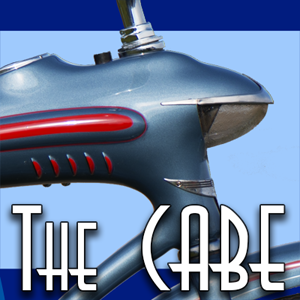In the 1941 "Dealer Catalog" (I do not have a 1939 Dealer Catalog, only a 1939 consumer catalog) the color options for a Cycle Truck were White, Ivory, or Cream with blue stripe or black, light red, blue, or bright yellow with stripe. It's worded so you could read it several ways, but they were all one color (not two tone) with a contrasting pin stripe color. I'm not sure where the Bright Yellow came from because it was not available on any other Schwinn model that year. They were considered industrial/commercial units, never painted too flashy back in the day. In the 1950's the U.S. post office department had Cycle Trucks still painted Olive Drab from the Army war surplus purchase. These were later repainted Red/White/Blue to match the Post Office new image with MR. ZIP (code).
Nothing is wrong with two or three tones, but originally, they were built in one color with a contrasting pin stripe color done in a very thin "box style". The colors on Cycle Trucks followed the color changes of the other Schwinn models of the same production year.
In theory, it was possible to order any Schwinn model (but not those with a X in the model number) with REVERSE GAURDS "if wanted". It seems easy to visualize that on a deluxe model bicycle with two different colors that you could reverse for the effect. But I'm not sure how that would work on a single-color bike like a Cycle Truck? But for the record, it was listed as an option.
Note, the Cycle Truck was not listed as a model in either the 1937, or the 1938 Dealer Catalogs. It's our belief that it was first available in 1937, but if it was, it's weird that it was still not in the 1938 model year Dealer Catalog. I'm not sure how this model's information was released to the dealers. Just more minutia.
John

































 Doh.. I didn't notice that. Looks good either way
Doh.. I didn't notice that. Looks good either way 

